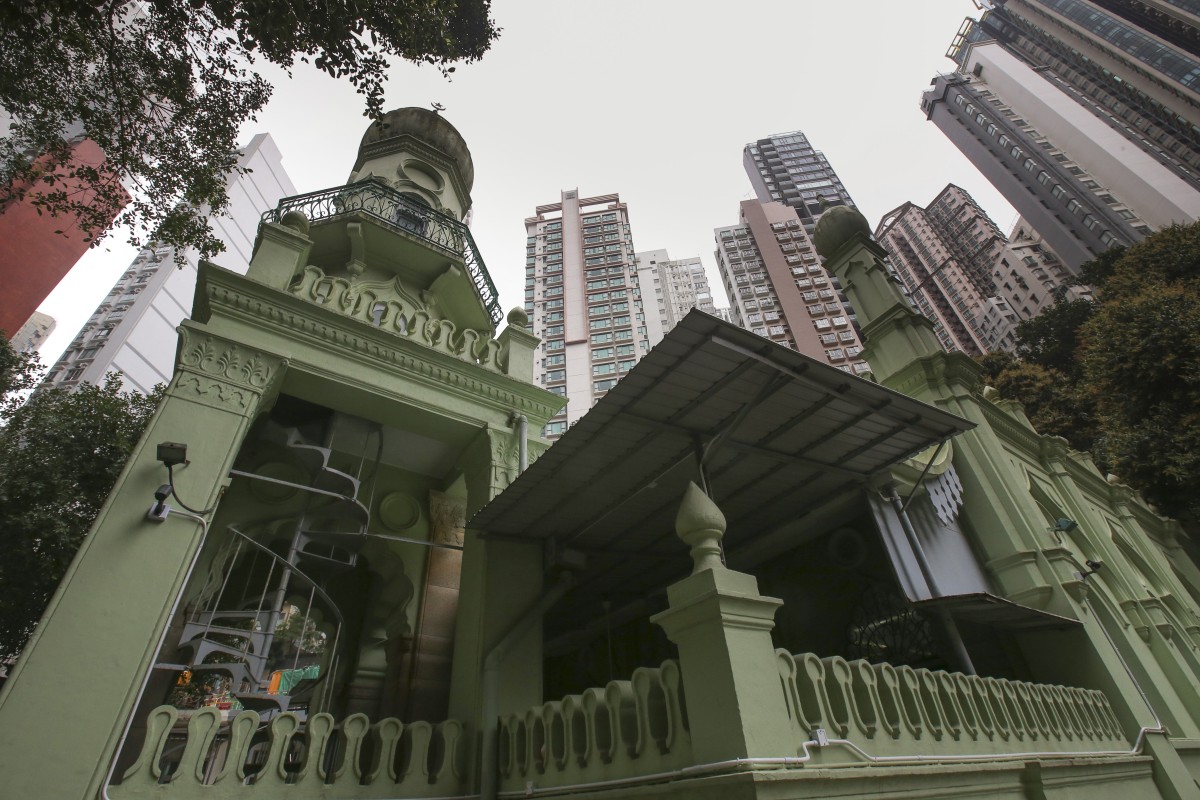
- Members of this South Asian community stay in touch with their roots through food and family
- Most Pakistanis living in the city can trace their lineage back generations, to when Hong Kong was a British colonial outpost

 Jamia Mosque is the oldest in Hong Kong and is a place where many Pakistanis come together to worship.
Jamia Mosque is the oldest in Hong Kong and is a place where many Pakistanis come together to worship.The influence of Pakistani culture on Hong Kong is quite clearly visible, with our city being home to places like the world’s first Michelin-starred Pakistani restaurant and the distinct green Jamia Mosque.
Most Pakistanis living in the city can trace their lineage back generations, to when Hong Kong was a British colonial outpost. Arriving from Attock, Kashmir, Chakwal, and other parts of Pakistan, many came to oversee mess halls for British soldiers during the first world war, says Chief Imam of Hong Kong, Mufti Muhammad Arshad.
The chief imam is a leader of the Muslim community. Young Post spoke to Arshad and Sophia Naqvi, a local student who will attend Columbia University in the US this fall, to learn more about Pakistan’s influence on our city.
Hong Kong stories: Getting to know the city's Sikh community
“It was the beginning of the 19th century when the Muslims of [the Indian] subcontinent started to move here, when Pakistan was not yet created. Although they were from different parts of old India, some of them surely belonged to the current Pakistan area,” said Arshad.
During the 1950s, shortly after Pakistan split from India, Pakistanis were making their mark on the city by providing their services in the Hong Kong Police Force and correctional centres.
Sophia, 18, told us how Pakistani contributions to the city began with their efforts in manual labour and construction jobs. “Hong Kong’s reputation as a city of high-rises and interesting architecture starts with them,” she said.
Arshad said that further Pakistani influence can be seen through Hong Kong's diversified workforce. Many workers are employed as “clerical support workers, service and sales workers, and [in] elementary occupations.”
“In colonial times, they were posted as doctors, engineers and professionals. If you look at the history of hospitals here, you will find many names of Pakistani doctors.”
HK’s hidden history makers, the Nepalese Gurkhas
“There were Pakistani engineers [involved] in the building of the airport and Tsing Ma bridge,” said Arshad, adding that Pakistani engineers also helped construct many of the city's MTR buildings.
Areas in Kowloon, as well as districts like Chai Wan and Central, have beautifully constructed mosques that are centres for the Pakistani religious community. Arshad explained that the first Pakistanis to migrate to Hong Kong in the 1930s “requested a piece of land in the Central area to build a mosque”. Sophia added that many of the mosques have Pakistani imams and are frequented by the Pakistani community.
Similar to mosques, the Pakistan Club of Hong Kong also represents a cultural hub in the city for the community. It serves as a place for Pakistanis to celebrate their cultural traditions together.
Building schools and helping the homeless are a few ways the Pakistani community give back to the city, but their efforts stretch far further than this. Arshad explained that there are two major community organisations that play a substantial role in the community: the Inc Trustees of the Islamic Community Fund of Hong Kong and the Pakistani Association of Hong Kong.
Sophia also told us how her parents run the AAN foundation, which raises awareness for Pakistani and other Asian contemporary artists in Hong Kong. She also told us how she enjoys indulging in Pakistani delicacies with her family, particularly fresh chaunsa mangoes.
Hong Kong stories: The Indian immigrant who helped build HKU and the road that bears his name
“The presence of South Asian and Pakistani restaurants, grocers, and other establishments in Hong Kong has contributed to the multicultural and dynamic food scene of the city,” she said.
What Sophia believes is integral to Pakistani culture, however, is family.
“It’s through family that we maintain our culture in Hong Kong,” she said. “Whether it’s by eating a Pakistani dinner, celebrating Eid, or practising Mehndi [henna] designs before a special occasion, we use our family to maintain our connection to our culture.”
